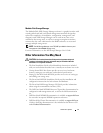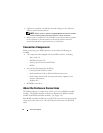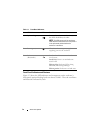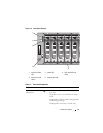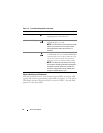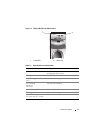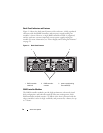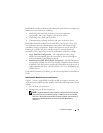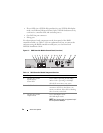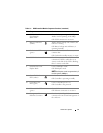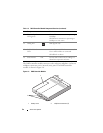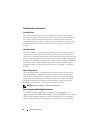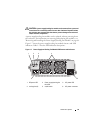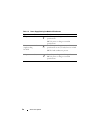
About Your System 19
Each RAID controller module provides data path and enclosure management
functions for your enclosure, including:
• Monitoring and controlling enclosure environment elements
(temperature, fans, power supplies, and enclosure LEDs)
• Controlling access to the
physical disk
s
• Communicating
enclosure
attributes and states to the host server
Each RAID controller module has dual iSCSI In ports for host access. The
two iSCSI ports provide redundant host connections and support a high
availability storage environment. Various configurations can be utilized, in
both
single controller
and
dual controller
mode, to connect the storage
enclosure to hosts depending on specific redundancy needs. For example:
•
Single Path Data Configuration
– The single path provides a large
number of nonredundant physical connections to the array through an
industry-standard Gigabit Ethernet Switch.
•
Redundant Dual Path (RDP) Data Configuration
– The RDP allows two
separate physical paths for each client through a Gigabit Ethernet Switch.
In addition, this configuration provides full redundancy through the use of
either redundant disk array controller (RDAC) drivers or multipathing I/O
(MPIO) drivers.
For detailed information on cabling, see the
PowerVault MD3000i Installation
Guide
.
RAID Controller Module Connectors and Features
Figure 1-5 shows a single
RAID controller module
as it appears from the rear
of the enclosure.
RAID controller module
connectors and components shown
include:
• Two iSCSI In port connectors
• Management port Ethernet connector
NOTE: The RAID controller module network configuration can be assigned
using a DHCP server (the default setting). If a DHCP server is not available
(time-out is 10 seconds) then the RAID controller modules uses the static IP
addresses of 192.168.128.101 for controller 0 and 192.168.128.102 for
controller 1.



